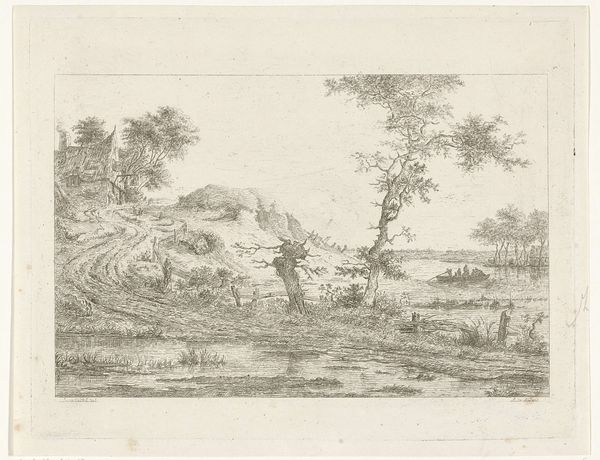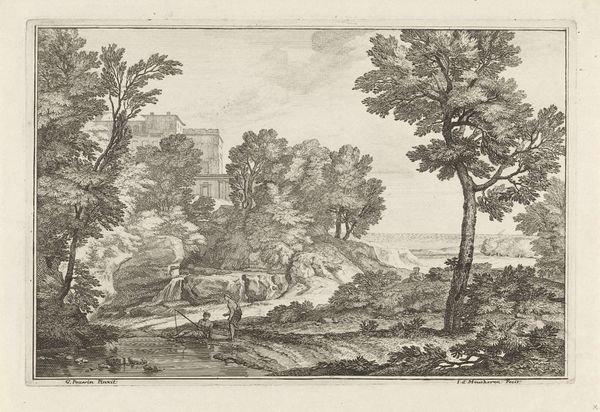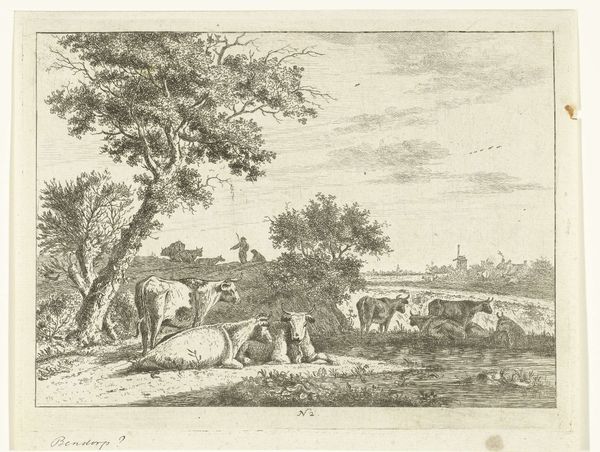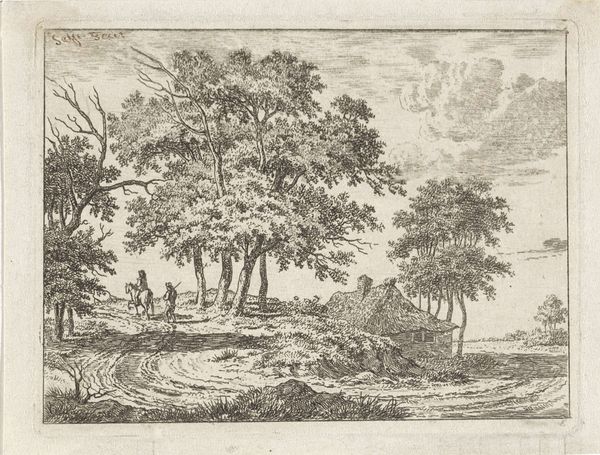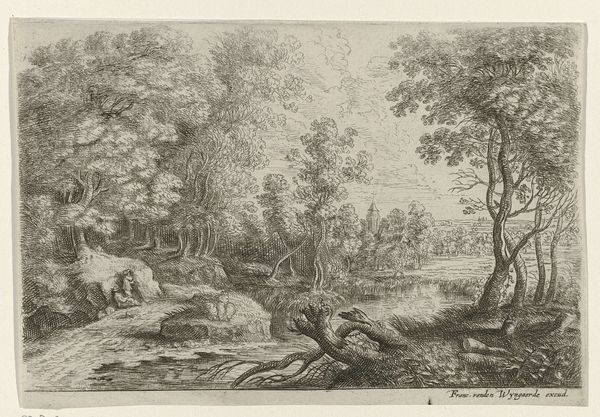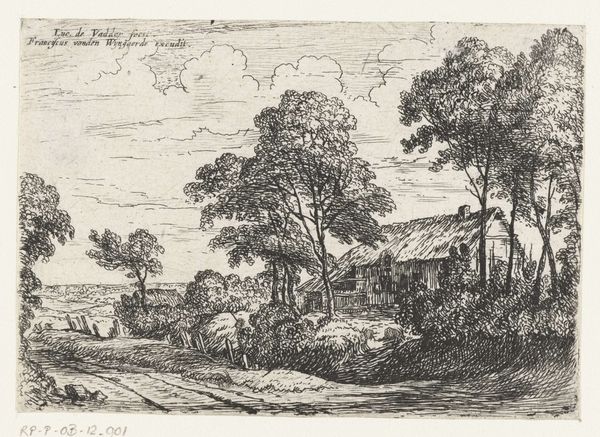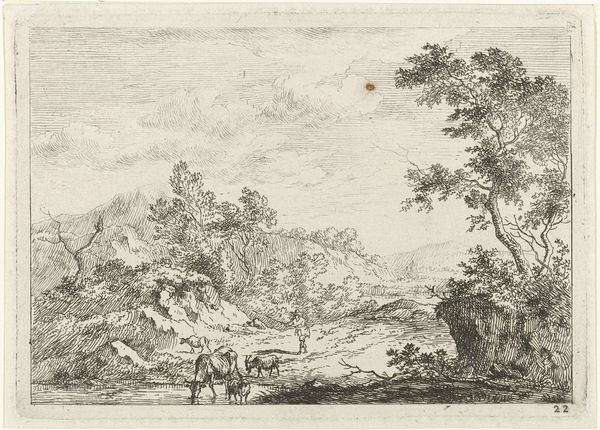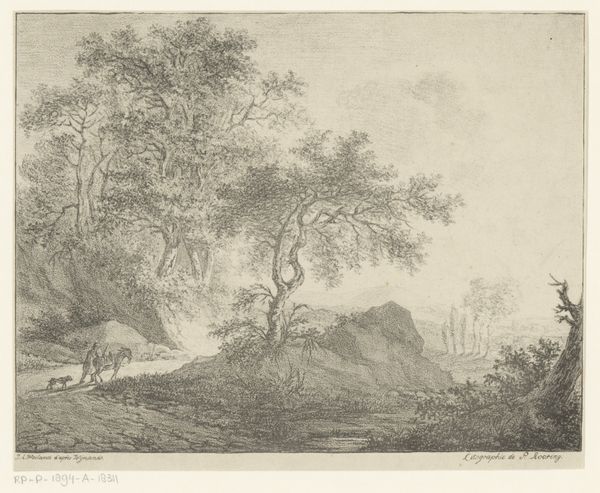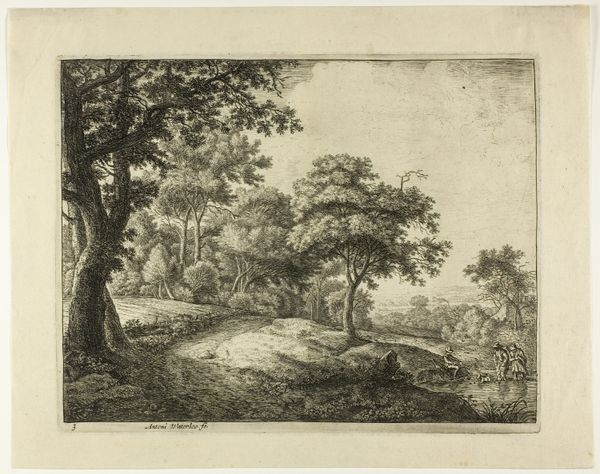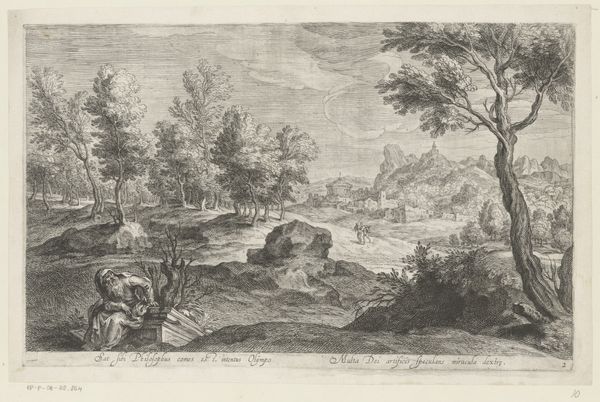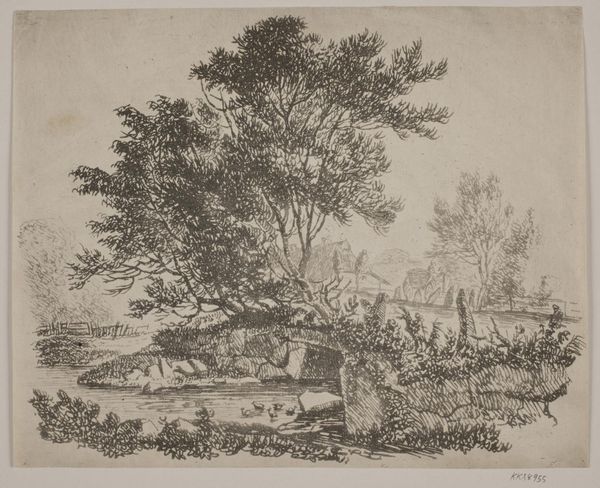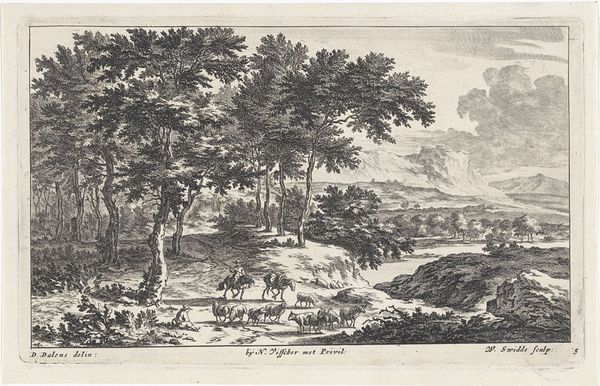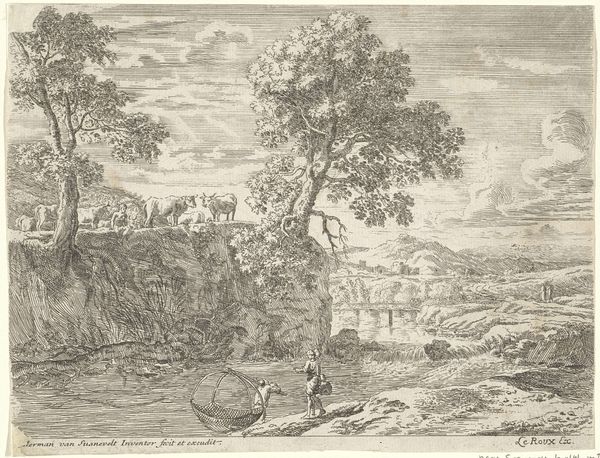
print, etching
# print
#
etching
#
landscape
#
etching
#
line
#
realism
Dimensions: height 186 mm, width 244 mm
Copyright: Rijks Museum: Open Domain
Editor: This is "Huis op een heuvel," or "House on a Hill," an etching dating from 1796 to 1856, attributed to Reinierus Albertus Ludovicus baron van Isendoorn à Blois. The textures created with the etched lines give the landscape an almost dreamlike, nostalgic quality. How do you interpret this work? Curator: Well, the prevalence of landscape etchings like this points to the evolving relationship between the aristocracy, like van Isendoorn à Blois, and the land they possessed. It romanticizes rural life, offering a carefully composed view rather than the reality of agricultural labor. Notice how the house is small and almost hidden, dwarfed by the land. Editor: I see what you mean! The landscape really does dominate. Was this sort of romanticized view of nature common at the time? Curator: Absolutely. The late 18th and early 19th centuries saw a surge in landscape art across Europe. Prints like this made these idealized scenes accessible to a wider audience. Van Isendoorn à Blois, a Baron, creates not just a personal memento but a piece reflecting and shaping broader cultural values. Editor: So, it’s less about accurately depicting a specific place and more about conveying a particular feeling or idea about the countryside? Curator: Precisely! And consider the power dynamic. The Barons were wealthy landowners, so art became a way of reinforcing that position but with sentiment, implying that landowners are kind people and the land is picturesque under their management. Who would criticize it then? Editor: That’s a perspective I hadn’t considered. The etching feels idyllic, but there's so much more going on under the surface. Curator: Indeed. It reminds us that art always exists within a social and political context. What starts as landscape can also unveil the power behind that view. Editor: Thanks so much. It is really interesting to think of the art itself becoming political like this. Curator: My pleasure. Remember to question the perspectives presented in art and seek to understand the stories and beliefs behind art, which I find brings it to life.
Comments
No comments
Be the first to comment and join the conversation on the ultimate creative platform.
